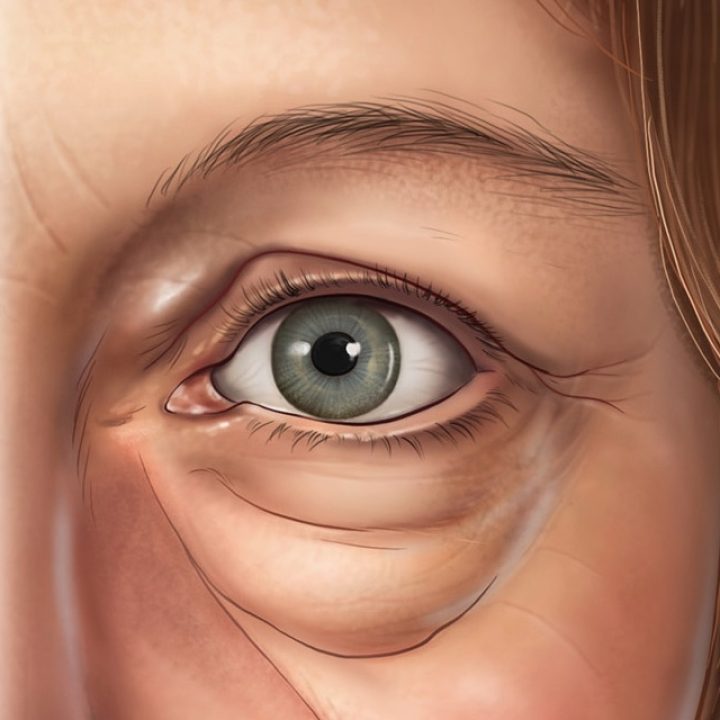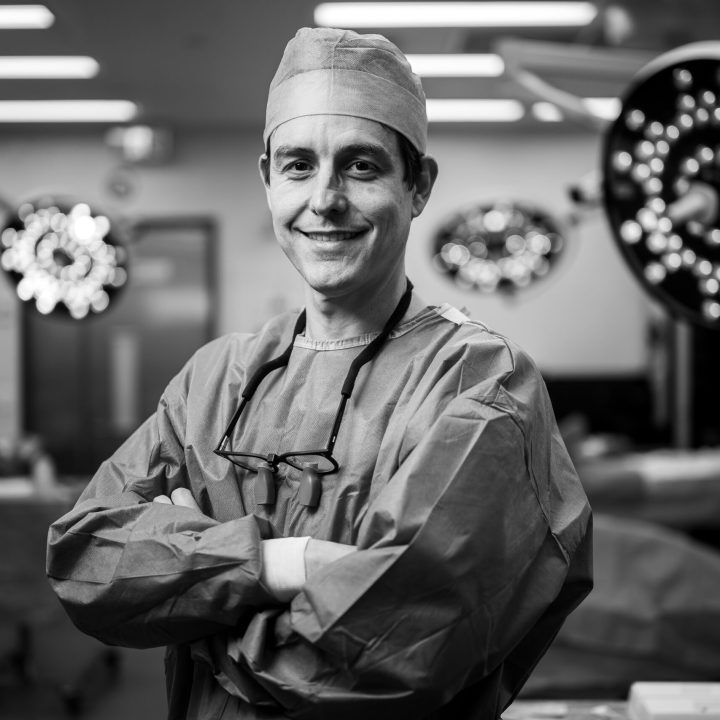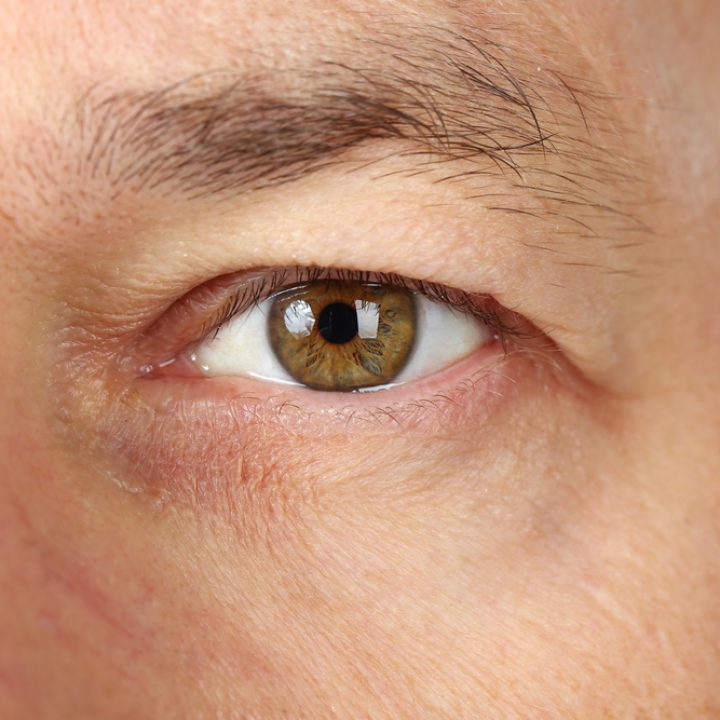Lower Blepharoplasty Melbourne
(Lower Eyelid Surgery)
Lower blepharoplasty in Melbourne with Dr Rodrigo Teixeira, specialist plastic surgeon, to address concerns such as under-eye puffiness, skin laxity, texture changes, or shadows beneath the eyes. These features can develop over time due to factors such as genetics, ageing, and lifestyle. Lower blepharoplasty focuses on removing or repositioning tissue to change the contour of the lower eyelid area. The aim is to achieve a balanced result that aligns with each individual’s facial features.
What is a Lower Blepharoplasty (Lower Eyelid Surgery)
Lower blepharoplasty, or lower eyelid surgery, is a procedure that involves adjusting or removing tissue beneath the eyes, which may include fat and the removal of excess skin. It is performed to address changes that can occur in the under-eye area due to the natural ageing process, genetics, or other factors.
People seek lower eyelid surgery for various reasons, including:
- Under-eye puffiness or bags caused by fat prolapse or tissue laxity
- Dark shadows or discolouration that create a tired appearance
- Fine lines and creasing or loose skin along the lower eyelid
- Prominent tear troughs or a visible hollow between the eyelid and cheek
- Loss of volume or contour beneath the eyes due to ageing or genetics
These features may develop gradually and can be discussed with a qualified specialist to determine the most appropriate treatment approach.
Learn more about complementary facial procedures such as Upper Blepharoplasty and Facelift Surgery that may be performed alongside lower eyelid surgery for comprehensive facial rejuvenation.

Learn more about Dr Rodrigo Teixeira and his approach to plastic surgery and patient care.
Our Lower Blepharoplasty (Lower Eyelid Surgery) Techniques
Transconjunctival Blepharoplasty
This technique involves a small incision on the inside of the lower eyelid, allowing direct access to the orbital fat without an external scar. It is most suitable for patients who have under-eye fullness but good skin tone, as no skin is removed. Fat may be carefully repositioned to fill the tear trough or improve the lid–cheek junction.
Subciliary Approach
A discreet incision is placed just beneath the lower lash line to remove or tighten excess skin. This approach may be combined with fat repositioning or orbicularis muscle tightening to correct laxity or more advanced signs of ageing. It allows refinement of the lower eyelid contour and a smoother transition to the cheek.
Fat Repositioning or Redraping
Fat preservation and redistribution are emphasised to restore volume where it is lacking and reduce fullness where it is excessive, using the patient’s own tissues to refine contour. This approach helps maintain structural support and reduces the risk of premature hollowness that can occur when too much tissue is removed.
Fat Transfer
In selected cases, fat may be harvested from another area and grafted to the tear trough or midface to restore volume. Fat transfer complements blepharoplasty by enhancing smoothness and improving contour around the lower eyelid and cheek.
Orbicularis Muscle Support or Suspension
When the lower eyelid or midface shows laxity, additional support may be provided by tightening or suspending the orbicularis oculi muscle. This helps maintain eyelid position, improves shape, and enhances long-term stability.
Canthopexy or Canthoplasty
These supporting procedures tighten or reposition the outer corner of the eyelid (lateral canthus) to improve tone and prevent postoperative eyelid descent. They are often recommended when pre-existing eyelid laxity or a negative vector anatomy increases the risk of lid malposition.
Midface Elevation (Midcheek Lift)
In some patients, lower blepharoplasty is combined with a midcheek lift to elevate the cheek fat pad and restore youthful contour to the central face. This approach addresses the tear trough and lid–cheek junction more comprehensively and can be particularly beneficial for those with midface descent or volume loss.
Dr Teixeira’s Surgical Approach to Lower Blepharoplasty Eyelid Surgery
Dr Rodrigo Teixeira’s approach to lower blepharoplasty eyelid surgery combines anatomical precision with a patient-centred philosophy. He considers how the eyelid, cheek, and midface interact, ensuring that surgical adjustments complement natural facial features and overall balance.
Each procedure is developed according to the patient’s anatomy, medical background, and treatment goals. Attention to detail guides every stage of planning and surgery, from the placement of incisions to methods that support healing and minimise their visibility. The chosen technique varies according to individual assessment, with consistent emphasis on preserving eyelid function and tissue integrity.
Learn more about Dr Rodrigo Teixeira’s qualifications and experience in facial and eyelid surgery.

Lower Blepharoplasty Surgery Risks and Complications
While complications are uncommon, transparency about potential risks is essential. Like all surgical procedures, lower blepharoplasty surgery carries the possibility of side effects and complications.
Common, temporary effects may include:
- Swelling and bruising around the eyes
- Mild discomfort or temporary blurred vision
- Light sensitivity and tearing
- Visible scarring
- Temporary dryness or tightness
Less common risks may include infection, delayed healing, visible scarring, eyelid malposition (ectropion or retraction), or prolonged swelling. In rare cases, dry eyes, visual changes, or need for revision surgery may occur.
Individual outcomes vary, and all risks are discussed thoroughly during consultation
Lower Blepharoplasty: What to Expect From Initial Consultation to Recovery
Initial Consultation
The process begins with a comprehensive consultation, during which Dr Teixeira assesses the under-eye area, discusses the patient’s concerns, and reviews their health and medical history. This allows him to create a personalised surgical plan aligned with the individual’s anatomy and expectations. Patients are encouraged to ask questions and discuss what can realistically be achieved through surgery.
Two separate consultations and a mandatory seven-day cooling-off period apply before any cosmetic surgery, in accordance with AHPRA guidelines.
Day of Surgery
On the day of your procedure, you’ll be welcomed by the clinical team and guided through each stage of preparation. Lower blepharoplasty may be performed in hospital or in the clinic, using local anaesthesia, with sedation or, general anaesthesia, depending on your treatment plan and comfort. The operation typically takes two hours, followed by a short recovery period where your eyes are covered and gently cooled and monitored before discharge.
As the anaesthetic wears off, you may experience tightness, mild stinging, tearing, or a feeling of puffiness, which are expected early responses as the tissues settle. Cold compresses, lubricating drops, and head elevation help reduce swelling and promote comfort. You’ll receive written aftercare instructions, and it’s important to have someone accompany you home and assist during the first 24 hours.
Recovery and Aftercare
Most patients experience swelling, bruising, and a feeling of tightness or puffiness around the lower eyelids during the first one to two weeks. These effects gradually improve as the tissues settle. Cold compresses or Hilotherm therapy, rest, and keeping the head elevated are recommended to reduce swelling and promote healing.
If stitches are placed, they are usually removed within five to seven days. Mild dryness, tearing, or temporary sensitivity to light can occur as the eyes adjust. Most patients return to light activities within 7–10 days, though final results may take several weeks as subtle swelling resolves. Follow-up appointments with Dr Teixeira and his team monitor your progress and provide guidance throughout recovery.
Our Melbourne Clinic
Located in Ivanhoe East, Melbourne, Unveil Plastic Surgery provides a welcoming, private environment equipped to meet high standards of safety and care. The clinic combines fit for purpose facilities with a calm and professional atmosphere, designed to support patients throughout their surgical experience.
Dr Teixeira’s team plays an essential role in ensuring patients feel comfortable and informed at every stage, from initial consultation through to recovery. With a focus on confidentiality, professionalism, and patient wellbeing, the clinic aims to provide a setting where individuals can make informed decisions about their care.
If you would like to learn more about lower blepharoplasty in Melbourne, you can book a consultation with Dr Teixeira to discuss your concerns and determine whether this procedure may be suitable for you.
FAQs
Lower blepharoplasty primarily focuses on the under-eye region and does not lift the entire face. In some cases, lower blepharoplasty is combined with a midcheek lift to elevate the cheek fat pad and restore youthful contour to the central face.
In some cases, lower blepharoplasty can improve the appearance of dark circles caused by shadowing from puffiness or hollowness from the tear trough. It may not significantly affect pigmentation-related dark circles, which are often due to skin colour or vascular factors.
Yes, in some cases, repositioning or adding fat during surgery can help restore lost volume and hollowness under the eyes. The approach depends on individual anatomy.
Costs vary depending on surgical complexity, anaesthesia, and facility fees. A detailed cost estimate is provided after a consultation.
This depends on the chosen anaesthetic. Some patients have the procedure under local anaesthesia with sedation, while others may have general anaesthesia for comfort.
Yes, certain cases can be performed under local anaesthesia, depending on the patient’s comfort level and the extent of correction required.
It’s generally recommended to wait until swelling has resolved and your surgeon has cleared you for travel, often after one week.
Lower blepharoplasty generally does not alter the natural eye shape. However, subtle differences can occur depending on the extent of the tissue adjustment and individual anatomy. These factors are assessed and discussed as part of the surgical planning process.





